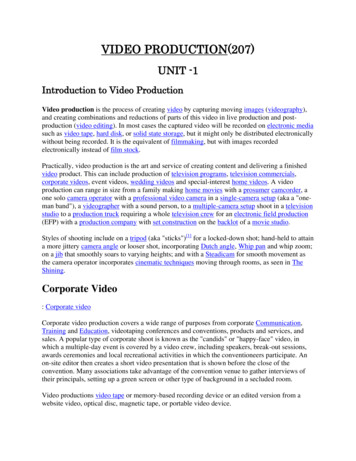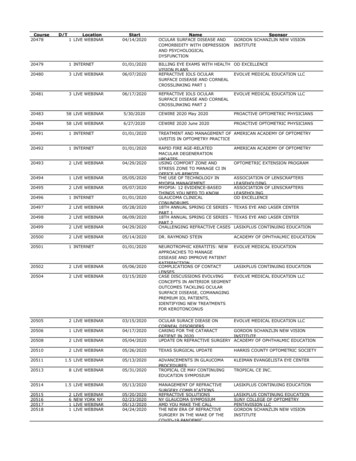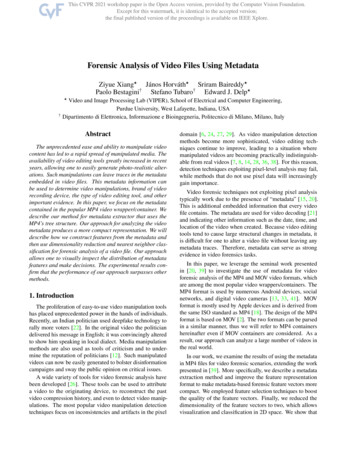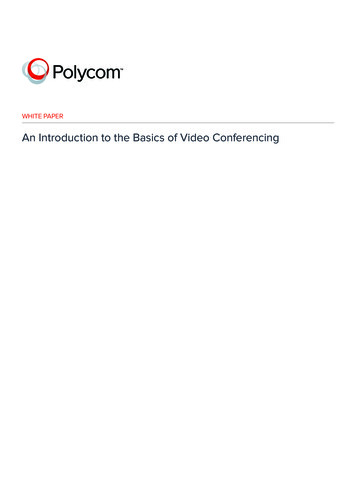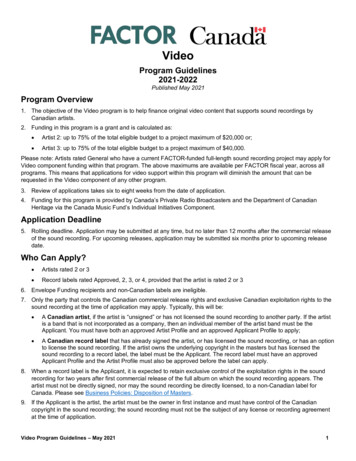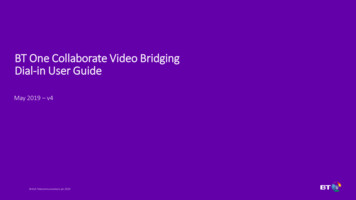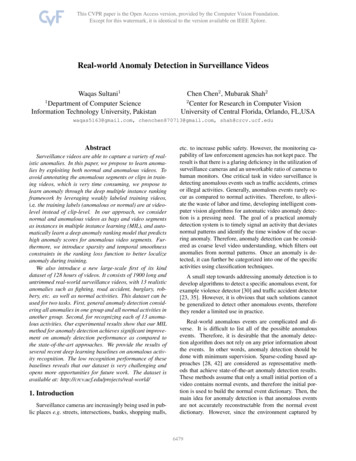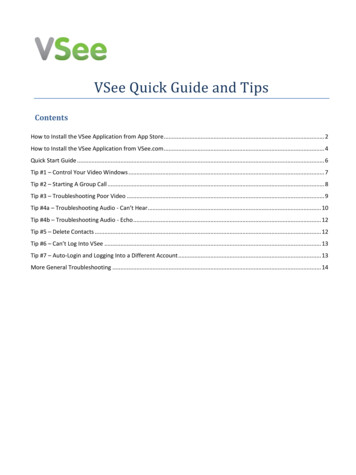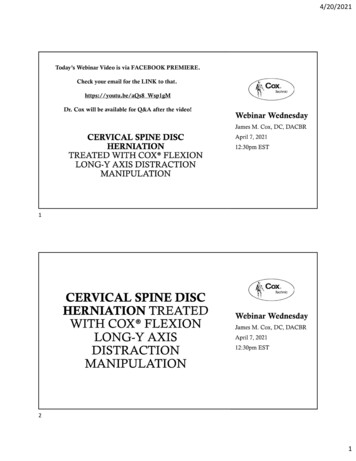
Transcription
4/20/2021Today’s Webinar Video is via FACEBOOK PREMIERE.Check your email for the LINK to that.https://youtu.be/aQs8 Wsp1gMDr. Cox will be available for Q&A after the video!121
4/20/2021342
4/20/2021563
4/20/2021784
4/20/20219105
4/20/202111126
4/20/202113147
4/20/202115ortextbook www.coxtrc.com168
4/20/202117189
4/20/20211910
PROTOCOL FOR COX TECHNIC FLEXION DISTRACTION ANDDECOMPRESSION OF CERVICAL SPINE DISC HERNIATIONby James M Cox DC DACBR FICC FIANM(H) HonDLitt4/21/2021Protocol I is administered manually until Protocol II is instituted as adequate radicular painrelief (50% Rule) and tolerance testing allows.All protocols start with and are continually monitored by tolerance testing.1. Preparatory Care.A. Ensure all locks are secure.B. Patient lies prone with the face on the headpiece with eyes in center of cutouts inthe headpiece. This places C5‐C6 at the opening between the cervical and thoracicpieces.2. Following clinical determination of the disc level of stenotic disc herniation, applytolerance testing for Protocol I, applying 2‐3 pounds of distractive force from foramenmagnum to the level of disc herniation to be distracted.3. One of two spinal contacts for treating cervical spine disc herniation may be used:a) Hand Contact ‐ Contact the posterior arch superior to the level of disc herniationdetermination, e.g. if it is a C5‐C6 disc herniation, the C5 arch is contacted. Doctorhand contact of the web of the hand on the spinous process and the thumb andindex contact on the transverse processes. This allows a cephalward distractionforce applied superior to the disc herniation.b) Occipital restraint ‐ The occipital restraint can be placed on the segments superiorto the disc herniation. Doctor hand contact is on the vertebra inferior to the discherniation. Distraction of the headpiece is delivered as the doctor hand contactexerts caudad force resistance to the distraction force applied.4. Distraction manipulation and mobilization with hand contact:a) Five four second distraction forces are delivered for a time of 20 seconds. This 20second distraction force is given 3 times and between each 20 second deliverytrigger point, acupuncture point, or acupressure is applied. As taught in didacticlecture, test at low force (2 lbs) increasing to 6 lbs incrementally by 2 lbs until 6 lbs isreached. Always continue treatment from the determined tolerance level. The forceapplication is taught by visualizing the computer graph of forces, so the doctorlearns the tissue tension of such forces. Some doctors retest their force levels intheir practice by watching the force graph.b) Apply manual distraction from the taut point, which is the point of interspinousprocess tautening and separation, at the chosen level. Patient tolerance at levels of
2, 4, 6 pounds of distraction force are delivered while asking if this causes anydiscomfort to the patient. If so, decrease to lesser force. Always contact the arch ofthe vertebra superior to the disc herniation for applying the contact described at A.and at the inferior cervical level as described in B above. Tolerance testing ifconstant as the distraction is applied. The force applied is that which causes nodiscomfort to the patient.c) Protocol II is started as adequate pain relief is attained and tolerance testing allowsfull range of motion to be started. Range of motion is applied with the cervical andupper thoracic spines under distraction. At this distracted point, lateral flexion,flexion, extension, rotation and circumduction are performed at each cervical andupper thoracic level. These motions are delivered with coupled motions underdistraction.5. Distraction manipulation and mobilization with the occipital restraint:a) Place the occipital restraints on the patient, asking for any discomfort and affordingappropriate attention to any complaint.b) 2 applications of distraction can be delivered with the occipital restraint in place:i. Contact the spinous process of the vertebral segment to be distracted, andapply long y axis force while moving the headpiece cephalward. Thisincludes the foramen magnum when it is distracted.ii. Contact the spinous process inferior to the vertebral segment to bedistracted, and apply a caudad force as the headpiece is moved cephalward.iii. Protocol II is given while distraction is applied and lateral flexion, rotation,flexion, extension, and circumduction are performed.iv.Doctor hand force can decrease or increase lordosis as deemed appropriate.6. Appropriated electrical stimulation can be applied to trigger points before or afterdistraction manipulation.7. Ultrasound, acupuncture, gua sha, vibration, heat or cold, or other modalities as deemedneeded are given.
distraction. 5. Distraction manipulation and mobilization with the occipital restraint: a) Place the occipital restraints on the patient, asking for any discomfort and affording appropriate attention to any complaint. b) 2 applications of distraction can be
